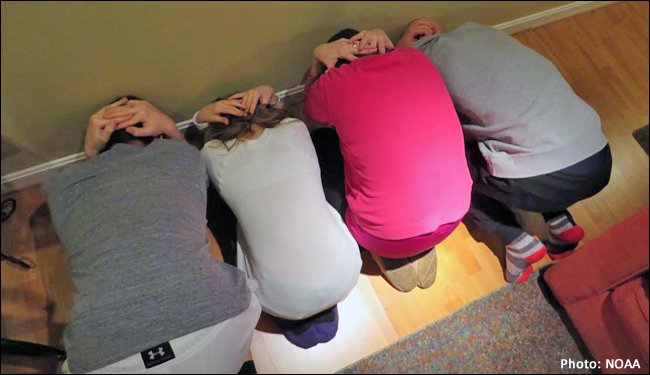
- By admin
- In Tornadoes, Weather Safety
Where to Go During a Tornado
Tornadoes are one of nature’s most destructive forces, capable of wreaking havoc in a matter of minutes within tornado alley. When a tornado warning is issued, knowing where to seek shelter can mean the difference between life and death. In this article, we’ll explore the safest places to be during a tornado and address common questions about sheltering.
The Safest Place to Be in a Tornado
When it comes to tornado safety, having a designated storm shelter is paramount. Storm shelters are specifically engineered to withstand the extreme forces of tornadoes, providing a secure refuge for individuals and families. One reputable provider of such shelters is Storm Shelters of Iowa, known for their durable and reliable above ground storm shelters designed to keep occupants safe even in the midst of a powerful tornado.
These shelters are typically constructed above-ground, offering the best protection from flying debris and the high winds associated with tornadoes. With features like thick steel walls and reinforced doors, storm shelters provide a level of safety unmatched by other types of shelters or hiding spots.
For those without access to a storm shelter, the next best option is to seek refuge in a sturdy, well-built building. Interior rooms on the lowest level of a structure, such as bathrooms or closets, can offer some protection, especially if they are devoid of windows and located away from exterior walls.
Is Under the Stairs Safe in a Tornado?
While hiding under the stairs might seem like a viable option, it’s not always the safest choice during a tornado. The space beneath a staircase may not provide adequate protection from falling debris or the collapse of the building’s structure. Additionally, if the stairs are located near windows or exterior walls, occupants could be at risk from flying glass or debris.
If under-the-stairs shelter is your only available option, take precautions to improve safety. Consider reinforcing the area with sturdy materials such as mattresses, blankets, or heavy furniture to provide additional protection from debris. However, it’s essential to recognize that this may not offer the same level of safety as a designated storm shelter or sturdy interior room.
What Do You Do If There is a Tornado?
In the event of a tornado, swift action is crucial. If you have access to a storm shelter, head there immediately. If not, seek shelter in the lowest level of a sturdy building, preferably in an interior room without windows.
If you’re outdoors or in a mobile home and cannot reach a sturdy building in time, lie flat in a low-lying area such as a ditch or culvert, covering your head and neck with your arms for protection. Avoid seeking shelter under highway overpasses or bridges, as these locations can be dangerous due to high winds and flying debris.
Remember, preparation is key to surviving a tornado. Have a plan in place for where to seek shelter, and ensure that all members of your household are aware of what to do in the event of severe weather.
